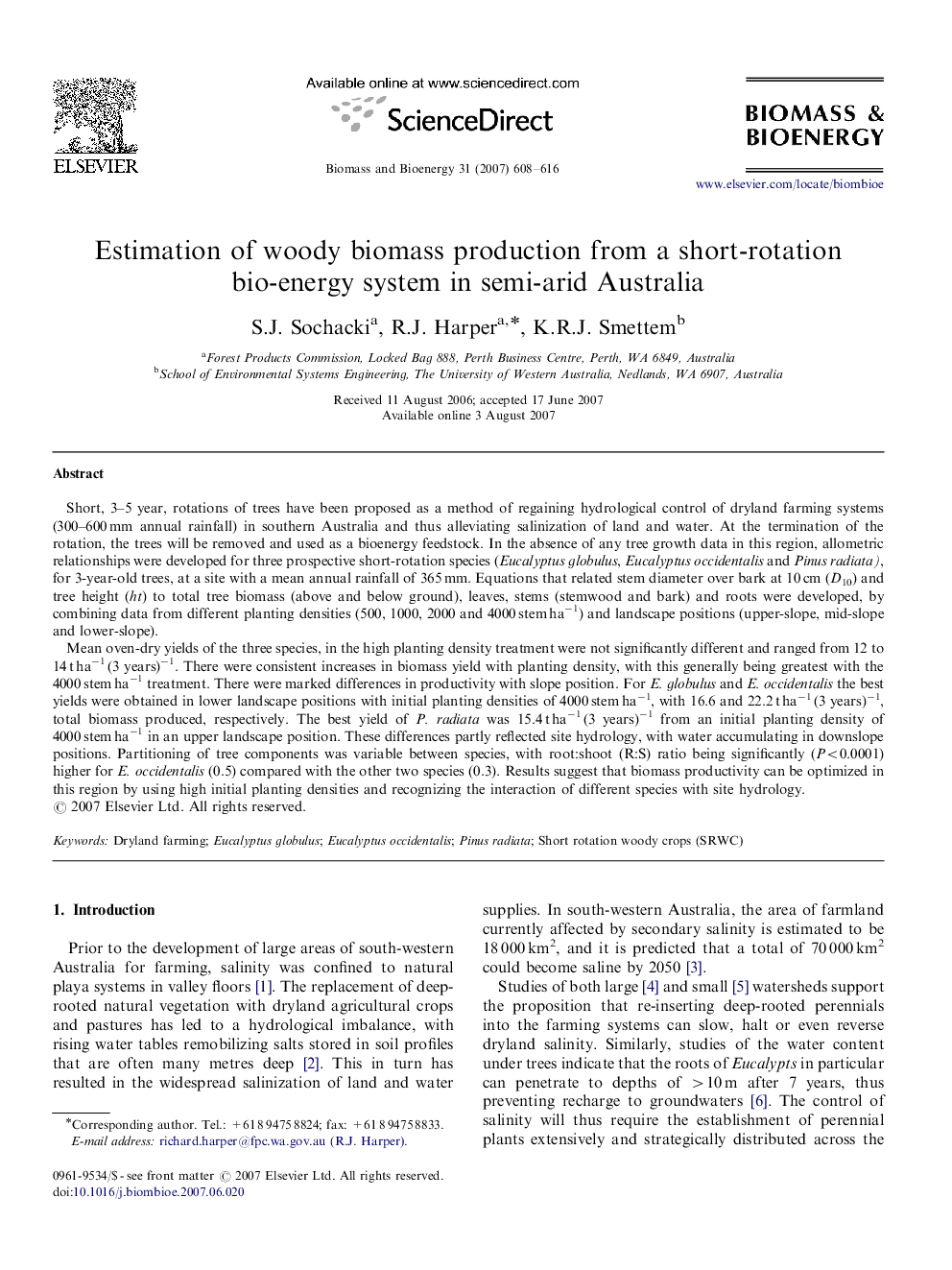| Article ID | Journal | Published Year | Pages | File Type |
|---|---|---|---|---|
| 678882 | Biomass and Bioenergy | 2007 | 9 Pages |
Short, 3–5 year, rotations of trees have been proposed as a method of regaining hydrological control of dryland farming systems (300–600 mm annual rainfall) in southern Australia and thus alleviating salinization of land and water. At the termination of the rotation, the trees will be removed and used as a bioenergy feedstock. In the absence of any tree growth data in this region, allometric relationships were developed for three prospective short-rotation species (Eucalyptus globulus, Eucalyptus occidentalis and Pinus radiata), for 3-year-old trees, at a site with a mean annual rainfall of 365 mm. Equations that related stem diameter over bark at 10 cm (D10) and tree height (ht) to total tree biomass (above and below ground), leaves, stems (stemwood and bark) and roots were developed, by combining data from different planting densities (500, 1000, 2000 and 4000 stem ha−1) and landscape positions (upper-slope, mid-slope and lower-slope).Mean oven-dry yields of the three species, in the high planting density treatment were not significantly different and ranged from 12 to 14 t ha−1 (3 years)−1. There were consistent increases in biomass yield with planting density, with this generally being greatest with the 4000 stem ha−1 treatment. There were marked differences in productivity with slope position. For E. globulus and E. occidentalis the best yields were obtained in lower landscape positions with initial planting densities of 4000 stem ha−1, with 16.6 and 22.2 t ha−1 (3 years)−1, total biomass produced, respectively. The best yield of P. radiata was 15.4 t ha−1 (3 years)−1 from an initial planting density of 4000 stem ha−1 in an upper landscape position. These differences partly reflected site hydrology, with water accumulating in downslope positions. Partitioning of tree components was variable between species, with root:shoot (R:S) ratio being significantly (P<0.0001) higher for E. occidentalis (0.5) compared with the other two species (0.3). Results suggest that biomass productivity can be optimized in this region by using high initial planting densities and recognizing the interaction of different species with site hydrology.
